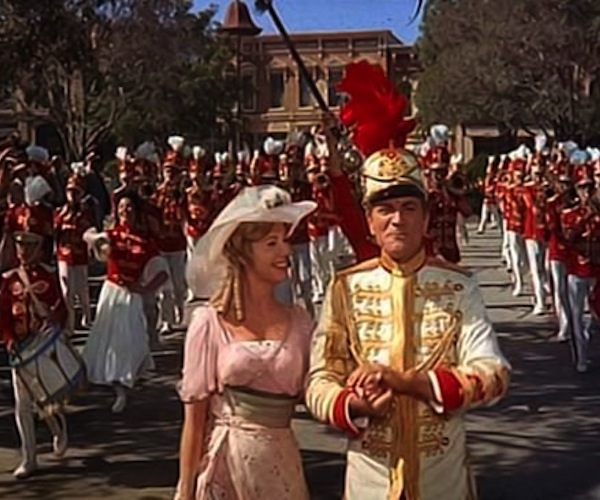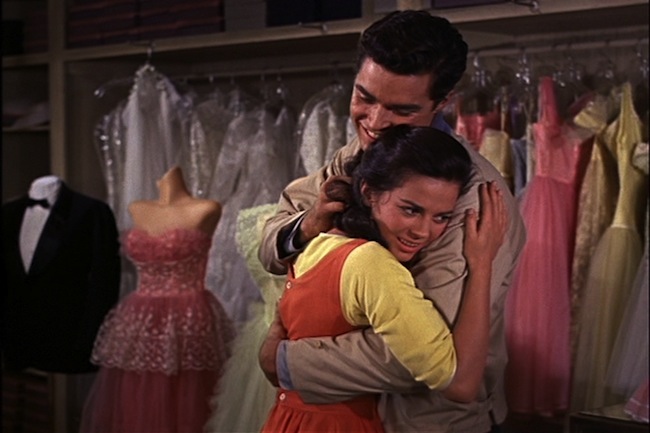Fuse Movie Review: Boston’s MFA Presents a Film Festival of Colorful Song and Dance
Boston’s MFA should be congratulated for screening these Technicolor musicals in way that does wondrous justice to their eye-popping colors.
By Paul Dervis
During the last two weeks of this month Boston’s Museum of Fine Arts is showcasing a film festival of Technicolor musicals from the ’40s, ’50s, and ’60s. The opening week screened Meet Me in St Louis, The Music Man, and one of the all-time classics, West Side Story. Not a bad way to start a festival.
(Remaining showings of the opening films: Meet Me in St Louis on May 22; The Music Man on May 22 and 30; West Side Story on May 28.)
Unfortunately the print for Meet Me in St Louis was just God awful, with constant scratches, missing frames, and occasional sound issues. Also, considering that the MFA is screening these musicals as part of its Season of Color programming, Meet Me in St Louis was an odd choice. Though it was filmed in Technicolor, the colors are hardly vibrant or breathtaking. The film was, however, one of the highest grossing films for MGM at the time of its 1944 premiere.
The musical is a memory play, based on novelist Sally Benson’s childhood, about a family in St. Louis that is at the crossroads. The father has been offered a position in New York City, but the rest of the family wants to stay in St. Louis. It is 1903 and the St. Louis World’s Fair is about to come to the city. Judy Garland plays Esther Smith as a perpetual ball of energy. Garland’s future husband, Vincente Minnelli, directed. Despite the poor print, Meet Me in St Louis remains a fast-paced and endearing musical.
Next on the agenda is The Music Man, which proffers a fairly pedestrian story line that is galvanized by the incomparable performance of Robert Preston. There are few characters who are so defined by the actor who portrayed them that it’s a challenge to imagine anyone else playing the role. Marlon Brando’s Stanley Kowalski and Lee J Cobb’s Willy Loman come to mind. Preston’s Harold Hill is in the same category. The actor rarely saw a role he didn’t wish to overplay, and that is the perfect approach for Hill, who is an endearing con man. He needs to convince a small town that its children should have the educational benefits of a marching band. And Hill needs to convince the town’s head librarian and piano teacher (Shirley Jones) that he is a music man for real, worthy of her loving admiration. Preston mugged and danced and gyrated to the camera for over 2 1/2 hours of over-the-top rapture.
In contrast to Meet Me in St Louis, The Music Man was an excellent choice for a festival dedicated to cinematic colors. To see the film on a large screen, aswarm with movement and energy, was very worthwhile, particularly given its first few minutes and its closing sequence. The opening credits are spelled out by formations of marching band members. And at the end of the film, when the raggedy band costumes are magically transformed into spectacular threads, it becomes hard not to hum along with “76 Trombones.”
The third offering his week is West Side Story. From the movie’s opening credits to its closing scenes, the colors of its vibrant images jumped off the screen. If you are only going to go to one film in the MFA series, this is the one – West Side Story needs to be seen on a large screen. For example, the film opens with abstract lines on a canvas. The colors in the background slowly begin to change while the lines become the outlines of buildings, the latter eventually morphing into cityscape of Manhattan.
The outdoor sequences were shot in New York’s Hell’s Kitchen. The playground where the gangs (the Sharks and the Jets) try to stake their turf is, in fact, still there. In many ways this is a transitional film, the romantic images of the New York of the ’40s and ’50s giving way to the harsh realities of the urban landscape of the ’60s. Jerome Robbins’ choreography remains amazing. The fight sequences are obviously abstract, but somehow they seem harshly real.
West Side Story is an update of Shakespeare’s Romeo and Juliet, but it’s appeal is also deeply rooted in its modern, balanced exploration of love and hate and all the complex conflicts that come with those emotions. The film also deals with racism in the United States in a way that few films before it had approached. The police are prejudiced; each ethnic group is xenophobic. America was indeed a melting pot, yet young immigrants railed against it.
The color scheme in this film is breathtaking, especially when seen on a large screen. Color assaults the senses, from the laundry hanging in the alley between tenements to the dresses and sports jackets worn by the club members at the dance.
Of course, the music by Leonard Bernstein and a very young Stephen Sondheim has become a cultural landmark. It is difficult to imagine anyone not being familiar with the majority of these songs.
Natalie Wood and Richard Beymer star as Maria and Tony. Yet the standout performances belong to Rita Moreno and Russ Tamblyn. Mareno has proven her mettle as a performer through the decades, though she will forever be associated with the role of Anita. And Tamblyn, who had been a child actor, was far and away the greatest interpreter of Robbins’s choreography in the film. That his career never really took off after West Side Story makes one wonder what we might have missed given the extent of the talent he displays here.
Watching West Side Story and The Music Man on a giant screen is a treat — the MFA should be congratulated for screening these Technicolor musicals in way that does justice to their eye-popping colors. Still to come: An American in Paris, Singin’ in the Rain, The Wizard of Oz, and Mary Poppins.
Paul Dervis has been teaching drama in Canada at Algonquin College as well as the theatre conservatory Ottawa School of Speech & Drama for the past 15 years. Previously he ran theatre companies in Boston, New York, and Montreal. He has directed over 150 stage productions, receiving two dozen awards for hs work. Paul has also directed six films, the most recent being 2011’s The Righteous Tithe.
Tagged: Meet Me in St Louis, Museum of Fine Arts, Paul Dervis, Season of Color, Technicolor, The Music Man, hollywood, musicals


